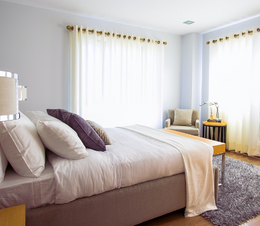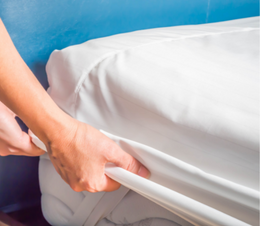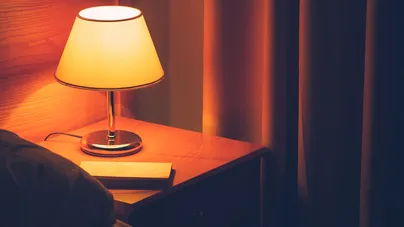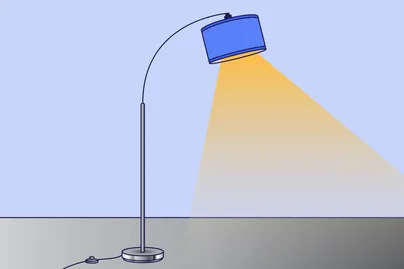In the Bedroom
Rest well in your bedroom by following some easy steps and using helpful products. Check out the suggestions below to become more independent in your bedroom.
How independent are you in the bedroom?
Start by asking these questions:
- Do you have a personal emergency response alarm? Do you have a plan if you feel unwell during the night?
- Do you sit on the side of the bed, stretch, and move your legs to wake up your body and mind before standing to start your day?
- Do you have a bedside lamp that is touch or voice-activated? Do you have enough light to see your way around?
- Do you use clips or cord organisers on your bedside table to make cords and switches easy to access?
Plan
Arrange your bedroom with a sturdy bedside table for easy access to a torch. Ensure the path from your bed to the door is clear of clutter and easy to move through.
Prepare
Doonas or duvets are lighter than blankets and can make it easier to change the bedding. Some bedding now comes with labels to show you where the top and bottom are. Having handy loops on your sheets can help them stay in place.
Pace
To feel refreshed upon waking, try to soak in some sunlight early in the morning and during the day. Exercising outdoors in the morning also improves your quality of sleep at night.
Posture
Your mattress height should ideally be just below your knees. You should be able to put your feet flat on the floor with your knees bent at 90 degrees to easily get in and out of bed.
Simple solutions for everyday bedroom tasks

Elevate your bed
If your bed is too low to the floor (below knee height), try raising it using bed raisers, longer legs, or castors to make it easier to change the linen. If your bed is on castors, use your knee to move it out from the wall. If the bed does not have castors, you can also move it away from the wall permanently.

Changing the bed linen
Fold your sheets to spread them across the bed easily. A bench at the end of the bed allows blankets to be rolled up the bed. Instead of lifting the mattress, kneel beside the bed and slide your forearm underneath when tucking in sheets. Only tuck a flat sheet at the bottom of the bed to make it easier to get into bed.

Seeing at night
Plug a sensor night light in to guide you to and from the toilet. You can also leave the bathroom light on to help you see at night.

Sleeping
Try not to use ‘blue light’ devices like smartphones, tablets, or computers 1-2 hours before bed. Aim to go to bed and wake up at the same time every day to support your body’s natural sleep rhythm. Limit daytime naps to 20 minutes. If you wake up early, the ideal time for a nap is between 1pm and 1:30pm, while for late risers, it's between 2:30pm and 3pm.
Enjoy independence every day
You can enjoy independence everywhere and everyday. We have created some helpful guides for different areas of your home and life to help you consider what small changes you can make or assistive technology you can use to regain or maintain your independence.
Everyday Tips
